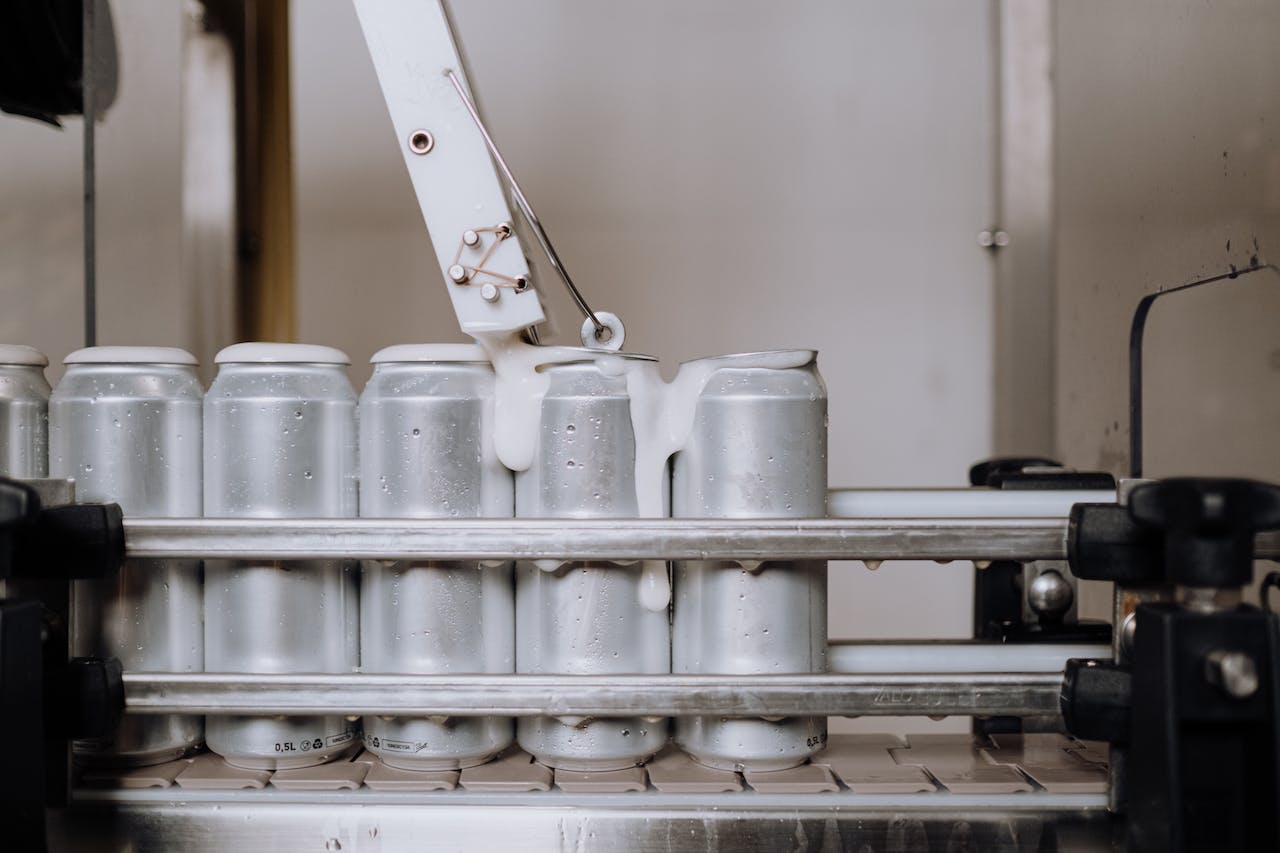Overall equipment effectiveness (OEE) is a best practices metric that helps manufacturers assess their operational efficiency. By identifying the six big losses that contribute to OEE, manufacturing leaders can take steps to eliminate these inefficiencies and improve their overall plant health.
Understanding the OEE calculation and monitoring process will help you set attainable goals for your production line. Let’s begin with the OEE definition and the three sub-components of this metric: Availability, Performance and Quality.
Availability
Overall equipment effectiveness, or OEE, is a measurement of how much of your time a piece of production equipment is actually productive. It’s a combination of three factors: availability, performance and quality that can be measured over a period of your choice, such as one shift or one day. This metric can help you identify areas of waste, and then take action to reduce these losses. The result is improved productivity and profitability. Using OEE software will make it easier for businesses to know better.
The first factor of OEE is availability. This measure evaluates the amount of actual production time compared to your planned production schedule, and it takes into account things like downtime due to equipment failure or maintenance, as well as lost production from unscheduled stoppages, such as minor breaks or idling. The higher your OEE score, the more efficient your operation is.
A high OEE score indicates that your production line is producing design-standard goods at a rapid rate with minimal downtime. Typically, an OEE score of more than 85% is considered world class for discrete manufacturing and is a sought-after long-term goal. A lower OEE score indicates that there is room for improvement, and you should focus on improving efficiency by eliminating loss causes.
Increasing your OEE score can save you money by reducing waste and optimizing equipment for its intended use. This can lead to reduced production delays, which in turn reduces the need for costly repairs and downtime. It can also help you increase the capacity and throughput of your production process by minimizing bottlenecks.
In addition, improving your OEE can improve the quality of your products and make you more competitive. It can also help you identify the root cause of poor quality, which can be caused by many different factors, such as equipment failures, slow cycles or a lack of standardization.
The good news is that boosting your OEE can be relatively easy. By identifying the six big losses in your manufacturing operation and taking steps to eliminate them, you can quickly boost your OEE score. These include equipment failures, slow cycles, idling time, minor stops and process defects.
Performance
Having machines that are highly productive can make your business more profitable, increasing the number of units you sell and decreasing your manufacturing costs. It can also help you open up the latent production capacity of your factory, potentially allowing you to expand your operations or add new lines in the future.
Measuring overall equipment effectiveness can help you identify production losses, eliminate waste, benchmark progress and improve your processes. It can even help you increase the yield of each machine, allowing you to produce more product in less time.
The three fundamental factors that go into calculating an OEE score are availability, performance and quality. Availability is the percentage of time the asset was able to complete its work, while performance is the speed at which the assets were able to operate and quality is the percent of produced units that meet spec.
A good OEE score is one that gets as close to 100% as possible. A perfect OEE score would mean that your machines were producing only good parts, at the fastest possible rate and without any downtime. Unfortunately, many manufacturing lines have an OEE of only 60%, which means there is a huge opportunity for improvement.
Measuring your OEE is relatively simple. Start by measuring the amount of time the equipment was actually producing, then subtract any downtime for unplanned events or scheduled maintenance. This will give you the net run time, which is what you want to compare against ideal cycle time (the theoretical fastest you can get your equipment to operate).
You can then divide this by the total number of pieces produced during the measurement period to give you your OEE score. If you don’t have a tracking system in place, you can calculate this manually using a spreadsheet. If you’re having a hard time measuring your OEE, it may be worth contacting an IT consultant to implement a computerized maintenance management systems software. This will allow you to track your data in real-time, which is an essential component of measuring and improving your OEE.
Quality

Overall equipment effectiveness (OEE) is a key manufacturing metric that measures the percentage of production time that’s truly productive. A score of 100 percent indicates that you are producing design-standard products as quickly as possible with minimal or no downtime. This score is calculated from three factors: availability, performance and quality.
Unlike total effective equipment performance (TEEP), which calculates how much your factory could produce over a 24-hour period, OEE measures productivity during the planned production time of a machine or process. This helps manufacturers pinpoint underperforming assets and draw a line between poor performance and one of the three main factors: availability, performance and quality.
In addition to identifying areas where an operation can improve, OEE analysis can help you implement specific strategies for improving performance. For example, reducing quality losses can have a huge impact on your OEE score. This can be done by focusing on eliminating defects, implementing quality control processes and adopting computer vision technology.
Another way to improve OEE is to reduce downtime, which can be caused by equipment failures, slow cycles and unplanned maintenance. You can reduce downtime by implementing preventive maintenance, creating an asset management system and establishing a maintenance schedule. You can also minimize equipment failures by using condition monitoring, installing sensors and incorporating a predictive analytics solution.
A good OEE score can help you stay competitive and meet customer needs. It can also save you money by minimizing production delays and helping you avoid expensive repairs or replacements. It can also increase capacity and throughput by eliminating bottlenecks and optimizing production quality.
Achieving a high OEE score isn’t impossible, but it requires a commitment to continuous improvement. To do this, you need to know the six big losses that will affect your overall equipment effectiveness and identify ways to eliminate them. Improving on each of these will have a positive impact on your OEE score and help you reach your production goals. For example, lowering downtime by reducing unplanned maintenance and implementing better training for your employees can make a big difference. It can also be helpful to invest in new technology or outsource some of your work.
Cost
In addition to providing a snapshot of your manufacturing line’s performance, overall equipment effectiveness offers insights into how much your machinery costs to operate. It combines three important factors: availability, performance and quality into one metric to help you identify and improve areas of your operation where losses occur. Using this information, you can develop a plan to eliminate these loss-related issues and reduce your machinery costs.
An OEE score of 100% means that your production line is producing products without defects (quality), running at the maximum speed possible (performance) and experiencing no unplanned downtime (availability). This is an ideal goal for manufacturing, but many businesses have room to improve their production processes. The best way to do that is by implementing an OEE strategy that can help you find the root cause of your machine’s problems.
The OEE metric measures how much of your planned production time is actually productive, and it’s an industry-standard benchmark that you can use to compare your business against others. Its generic nature makes it a versatile metric that works for any industry or process. The calculation is simple: OEE = Availability x Performance x Quality. Availability measures how often your equipment functions as expected, and it includes all events that considerably halt planned production. Performance looks at how well your equipment performs compared to its maximum capacity, and it includes events like minor stops, slow cycles and idling time.
Lastly, quality measures the number of defect-free units that are produced in your chosen time frame. Defects can be caused by numerous factors, including a lack of standardization, improper machine setup and human error. A poor quality score may also be the result of a faulty gauge or a system that isn’t aligned correctly between shifts.
Getting an accurate OEE score can be difficult, but you can reduce your losses by making the right changes to your operations and using technology to monitor your equipment. A digitally-enabled maintenance management platform can capture and analyze data from your assets to give you an accurate picture of your production line’s health. This will reveal hidden downtime and uncover the root causes of costly loss-related events. It can also highlight how many times a machine is down for repairs or due to an operator’s break, lunch or scheduled maintenance.





